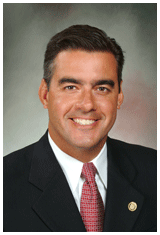We have seen more than our fair share of severe weather this year, and it’s only June. This spring’s floods have caused nearly $1.5 million in damage, and that number continues to grow. When we combine flood damage with the destruction from the late May tornado, more than 750 homes have been damaged and another 200 left inaccessible. We are fortunate to say no one was killed, and we’ve only seen minor injuries as a result of these storms. I wanted to use this week’s column to remind everyone of some important safety tips.
Experts with the National Weather Service suggest being ready for severe weather year round. A tornado can occur at any time of the day, any day of the year. Also, you want to have a plan in place before severe weather threatens your area so you can respond quickly. When conditions are favorable for severe weather, stay alert and watch for warnings.
Tornado Safety Rules (NWS):
- The safest place to be is an underground shelter, basement, or safe room.
- If no underground shelter or safe room is available, a small, windowless interior room or hallway on the lowest level of a sturdy building is the safest alternative.
- Mobile homes are not safe during tornadoes. Abandon mobile homes and go to the nearest sturdy building or shelter immediately.
- If you are caught outdoors, seek shelter in a basement, or sturdy building.
- If you cannot quickly walk to a shelter, immediately get into a vehicle, buckle your seat belt and try to drive to the closest sturdy shelter.
- If flying debris occurs while you are driving, pull over and park. Now you have the following options as a last resort: Stay in your vehicle with the seat belt on. Put your head down below the windows, covering with your hands and a blanket if possible. If you can safely get lower than the level of the roadway, exit your car, and lie in that area, covering your head with your hands.
Flood Safety Rules (NWS):
- Monitor the NOAA Weather Radio All Hazards or your favorite news source for vital weather-related information.
- If flooding occurs, get to higher ground. Get out of areas subject to flooding. This includes dips, low spots, canyons, washes, etc.
- Avoid areas already flooded, especially if the water is flowing fast. Do not attempt to cross flowing streams. Turn Around, Don't Drown™.
- Road beds may be washed out under flood waters. NEVER drive through flooded roadways. Turn Around, Don't Drown™.
- Do not camp or park your vehicle along streams and washes, particularly during threatening conditions.
- Be especially cautious at night when it is harder to recognize flood dangers.
Because Missouri is no stranger to strong storms, this session, the Senate and House passed Senate Bill 23 and House Bill 1035, which both include the “Rebuild Damaged Infrastructure Program.” The program was originally designed around the devastation seen in Joplin after the EF5 tornado ripped down the middle of the city in 2011. Joplin’s recovery since then has been incredible and the city will come back stronger than ever, but there is still much to be done. Much of the aid sent right after the tornado went towards immediate necessities like food, water and temporary shelter. There was little left for reconstruction and repair of the city’s infrastructure. Senate Bill 23 and House Bill 1035 will provide those funds to help Joplin and other Missouri cities that are impacted by natural disasters rebuild. Both bills are awaiting the governor’s signature.
Please take some time this weekend to talk with family members and come up with a plan in case severe weather strikes. Missouri's Stormaware.mo.gov website can also be a good resource for information. The website includes information about tornado sirens and weather alert radios. You can also sign up to receive free severe weather texting services that can alert you when storms are approaching.
I always appreciate hearing from you. If you have any questions about the topics discussed above, or any other issues, please do not hesitate to contact my office.
Unsubscribe |



